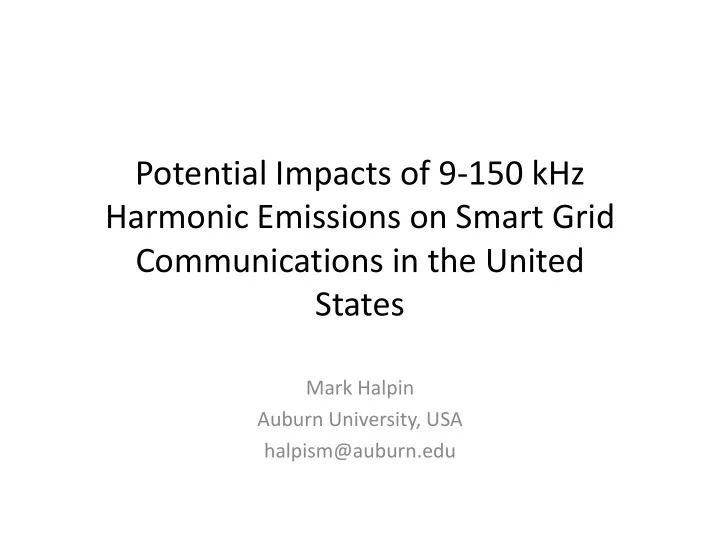

Potential Impacts of 9 ‐ 150 kHz Harmonic Emissions on Smart Grid Communications in the United States Mark Halpin Auburn University, USA halpism@auburn.edu
Background • Smart grid mostly means smart metering in USA – Costs covered by “American Re ‐ Investment and Recovery Act” (late 2000s) • Utilities in USA mostly use cellular radio technologies for “smart” communications – Only not used when conditions do not permit (terrain, environment, etc.) • Many European countries use some type of PLC – This will be used in USA when radio is not viable
Overview of Work • Numerous test results for European equipment and networks reported in WG8 – No real contributions from USA (not a concern?) • There is a need for information from USA – LV networks and systems are different – Equipment emissions could be different – Existing background levels could be different
Work Plan • Measure existing disturbance levels on LV systems to establish baseline for comparison – Consider daily variations, weekly variations, holidays, etc. • Measure emissions from specific equipment – CFL and LED lighting, Television/Displays, etc. • Evaluate impact of typical LV networks and wiring on emission propagation from source to meter point
Measurement Approach Measurements made at source end and load end of typical wiring/supply system with and without equipment in service
Interface Filter • Custom filter designed and implemented to remove 60 Hz and low ‐ frequency harmonics
Measurement Results—Background 72 hour background disturbance levels already exceed proposed CLs
Measurement Results—13W CFL
Measurement Results—11W CFL
Measurement Results—9W LED
Measurement Results—6W LED
Measurement Results— TV1
Measurement Results— TV2
Conclusions • Additional measurement results in paper • Adding disturbing equipment can increase or decrease total disturbance level – No summation law exists at this time • Effect of power cable between source and load has little impact on measurements – Disturbance levels at both source and load ends are similar with and without equipment in service • Additional testing is obviously needed
Recommend
More recommend